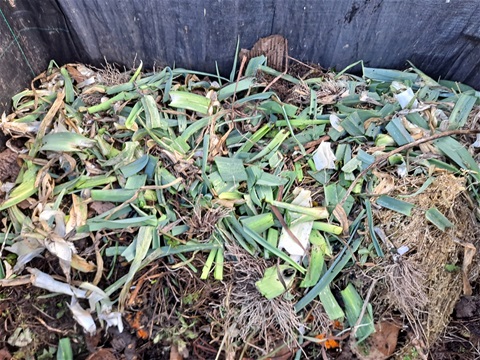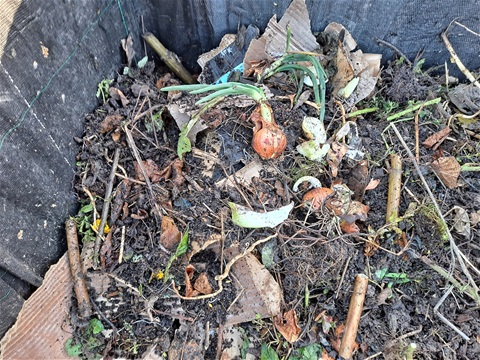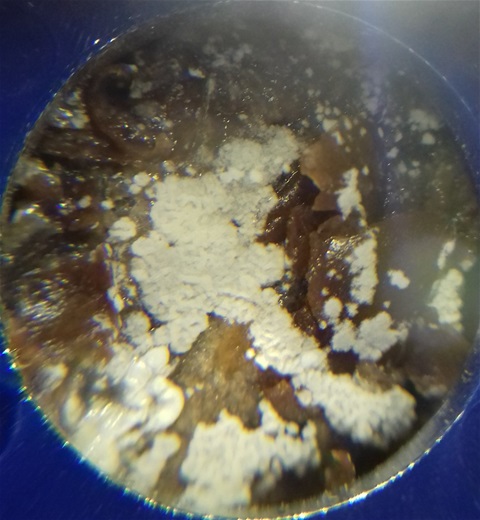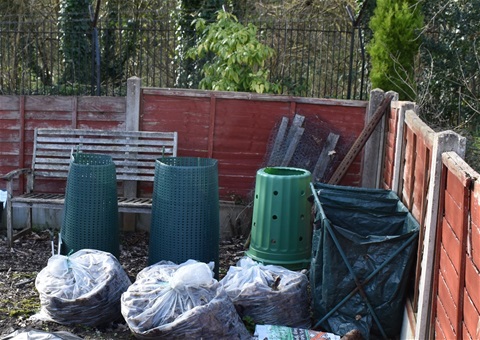In addition to being used as a composting “brown”, which can be kept dry and saved for use during the winter months autumn leaves can be used as a mulch, in a layer in lasagne composting, as worm
bedding, and to make leaf mould.
Composting
Autumn leaves that have turned brown and fallen to the ground provide a good source of carbon when composting winter crops. Leaves tend to be slow to compost and some
sources in the UK do not recommend their use when home composting. I ca understand this attitude when dealing with household waste, where there is cardboard regularly available, but when dealing with winter garden waste they are a valuable resource.
Shredding the leaves will accelerate their decomposition. This can be done using a leaf shredder or by scattering them on the lawn and mowing with a rotary lawn mower.
They can be bagged and stored dry until required and should
be mixed, or layered with, with a “green” material high in nitrogen e.g. manure, grass clippings, or food scraps. If cold compost leaves in a dalek type bin, nitrogen rich food scraps, kitchen waste such as vegetable leaves,
can be used.
If added to a compost bin, or heap, leaves may tend to mat, and this may result in some anaerobic decomposition unless they are regularly aerated or have been shredded pre-mixed with greens
If hot composting leaves, the
compost bin should be at least one cubic meter (3 cubic feet) to retain the heat and help the leaves decompose more quickly. When using leaves when hot composting I follow a 6-8” layer of leaves with a 1-2” layer of manure
as two of the brown and green layers when constructing a bin using alternate layers of green and browns. Others suggest using thinner layers of leaves. Some add a layer of soil between the leaves and manure. If manure is not available another nitrogen
rich layer may be used such as dried blood, or bone meal. More information is provided at http://www.carryoncomposting.com/142941489
Grass/Leaf Sandwich
An
alternative to adding the shredded leaves to a compost bin is to make a leaf/grass sandwich using alternative layers of grass and leaves as if you were Grass Boarding substituting the leaves for the cardboard that would be used in a grass board heap.
Leafmould
Choice of Leaves
With leafmould it is necessary to make use of the leaves that are available and if necessary, to adjust the procedure to obtain the best result. All leaves, including conifer needles, will eventually
breakdown but some will do so more quickly than others and should be treated separately. Small quantities of the more awkward ones such as holly and other evergreens are best shredded and added to the compost bin.
Traditionally leafmould was made by
piling the leaves in a heap and keeping it sufficiently wet to prevent them blowing all over the garden, or by imprisoning them within a wire netting cage. However, we can now bag and the store wet leaves for two years. Coffee grounds and/or urine can
be added to speed the process. (http://www.carryoncomposting.com/142941489)
The photo shows leafmould corning at our Stokes wood composting site
Bokashi leaf compost
There is a variation on making leaf mould using plastic sacks this involves adding the contents of the Bokashi bin to the plastic leaf mould sack containing dry leaves during the winter months. This is reported to produce leaf compost during the coming
spring and summer. I have not tried this, but further details are on Jenny`s Bokashi Blog.
https://bokashiworld.wordpress.com/2011/11/01/autumn-leaves-make-great-pumpkins/



